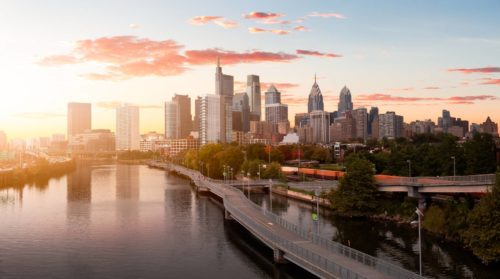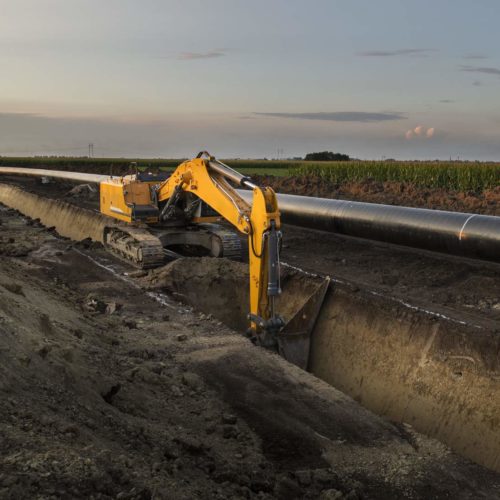
What’s a Gas Utility Without Gas?
The Philadelphia City Council will hold a public hearing this week to discuss the future of Philadelphia Gas Works (PGW), the country’s largest municipally owned gas utility. The hearings follow the release of the highly anticipated PGW Business Diversification Study in December, which explored several decarbonization pathways and business implications for the utility under Philadelphia’s 2050 carbon neutrality goal.
This week’s hearing and the study both seek to answer the question: how does Philadelphia successfully prepare PGW for a future that will not use fossil fuels? Philadelphia and PGW will have to navigate this transition thoughtfully. The utility serves half a million customers and employs approximately 1,600 workers.
The Business Diversification Study frames the challenge and the opportunity. PGW will need to significantly evolve in the next 10 years to maintain its financial viability and workforce. At the same time, it has an opportunity to transform Philadelphia’s housing stock, reduce carbon emissions, and improve local air quality and health.
Cities and states throughout the country are encountering similar challenges as they prepare to decarbonize their buildings. The critical question is how to take proactive steps today to set up an equitable and prosperous energy transition in years to come.
No Preserving the Status Quo
A key takeaway from the study is that change is inevitable: gas use in buildings is expected to fall 80–95 percent by 2050—and PGW must prepare for that decline.
One scenario in the study—labeled the “Decarbonized Gas” scenario—assessed the feasibility of maintaining the existing PGW gas network while meeting Philadelphia’s net-zero climate goals. The study found PGW would face significant cost and supply challenges sourcing enough decarbonized gases, such as renewable natural gas and hydrogen, to heat Philadelphia buildings. In fact, sky-high commodity costs would leave PGW in a bigger financial hole than in any other scenario: an $840 million to $3 billion annual revenue gap by 2050.
The three remaining scenarios outlined in the study, each of which reduce gas use through building electrification, offer more economically feasible outcomes. One scenario examined fully electrifying buildings, one considered a hybrid strategy in which buildings electrify but also maintain a gas-fueled heating system as a backup, and one scenario evaluated a future in which PGW supplements electrification strategies with geothermal networks that provide heating and cooling services to part of the city.
Philadelphia is not alone in identifying building electrification as a technically feasible, cost-effective way to decarbonize buildings. Decarbonization studies from neighboring states like Maryland, New Jersey, and New York have come to similar conclusions. These studies have found that decarbonized gases are typically more economically viable in other sectors, where emissions are difficult to abate, including heavy-duty transportation, cement production, and steelmaking.
Early Action Is Key
As the pathway to zero emissions becomes increasingly clear, early action can reduce reliance on the gas system, lower costs for ratepayers, and enable new business models—ensuring an equitable energy transition.
PGW is slated to spend more than $600 million through 2027 replacing or building out its aging gas distribution network, with plans to spend billions more in decades to come. These investments present a large and growing financial risk to ratepayers and the city, particularly as gas use in buildings declines 80–95 percent by 2050 as expected. The equity implications are also substantial: without a proactive plan, skyrocketing gas costs would most impact low-income households.
A critical first step is a city oversight process addressing long-term questions of gas transition in Philadelphia. This would review proposed gas infrastructure investments, identify changes required in policy or utility programs, and incubate pilot programs and protections for a just transition—developing a pathway for city and, where necessary, state action. Utility regulators in Colorado, Nevada, and New York have already initiated such processes.
Decision-makers should consider:
- Engaging in immediate policies to limit gas infrastructure costs, such as requiring or incentivizing all-electric new construction, encouraging electrification for buildings that use oil or propane heating, and slowing down gas infrastructure replacement programs while triaging and repairing leaks.
- Exploring non-pipe alternatives to reduce gas system investments and diversify PGW’s business. These alternatives include avoiding new pipeline capacity by helping customers electrify or improve efficiency, or decommissioning aging gas lines through targeted, neighborhood-level electrification. Utilities in other states are pursuing these approaches: PG&E is actively exploring savings through neighborhood-level electrification in California, and gas utilities in Massachusetts are piloting networked geothermal projects.
- Prioritizing solutions for low-income residents. As Philadelphians begin to electrify, low-income residents on the gas system will be left to pay for aging gas infrastructure. Subsidies would make electrification accessible to low-income customers and ensure it saves money and improves health and comfort. Embedding electrification into other city programs and reforming low-income electricity rate structures can also improve accessibility.
- Implementing a clean heat standard with targets for 2025 and 2030, as suggested in the study. Near-term greenhouse gas emissions targets for the heating sector and realistic limitations on the role of decarbonized gases create a framework for the city and PGW to ensure progress against its long-term climate goals.
Diversification Will Unlock Economic and Quality of Life Improvements for Philadelphians
The transformation of Philadelphia’s building sector—and PGW’s business alongside it—has the potential to improve lives in Philadelphia. Residents currently suffer one of the highest energy burdens of any major US city, disrepair in the housing stock, and extreme heat and air pollution in minority communities.
A transition to clean heating in homes, schools, and offices could address these economic, health, and safety concerns, particularly if integrated with existing programs. Philadelphia Energy Authority’s Built to Last pilot program is exploring integrating home repairs, weatherization, and electrification to reduce energy costs, improve air quality, and enhance comfort. Other programs, such as the Energy Coordinating Agency’s Heater Hotline and PGW’s Home Comfort program, service thousands of low-income households per year, and these programs could be revamped to encourage fuel switching to efficient, electric technologies.
The benefits of the switch go beyond saving money. Gas appliances, especially gas stoves, have been linked to poor indoor air quality and negative health impacts in vulnerable populations, including children with asthma and the elderly. Switching from fossil-powered heat to electric heat pumps, which provide both heating and cooling, also introduces cooling to homes with limited or no cooling today, improving public health outcomes during heat waves. And all of these programs can create local jobs.
PGW has a once-in-a-generation opportunity to transform itself and secure economic opportunity for its employees and the city, but only through proactive and transparent planning. And Philadelphia is just one of many cities and states grappling with similar energy transition issues. Now, the energy world watches and waits to see what the country’s largest municipal gas utility, and the city that owns it, decides to do next.

